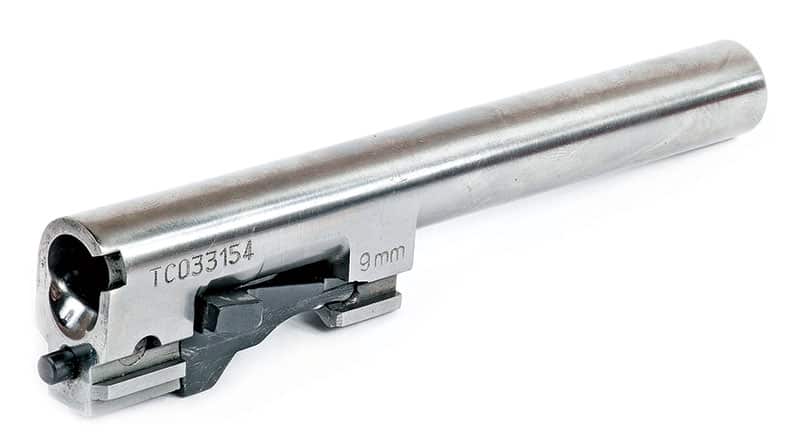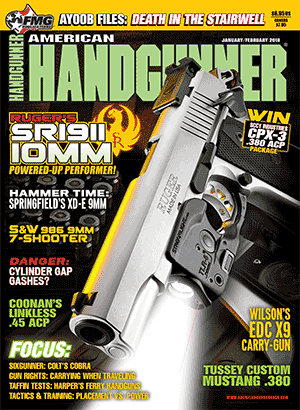The "Other" Locking Systems
So you understand everything there is to know about semi autos, right? You get all the ins and outs of your tilting-barrel locked 1911, GLOCK or CZ-75? Human ingenuity being what it is, there are several other options out there — and they’re pretty interesting to boot.
Let’s begin by discussing the “short recoil” principle, which is employed by tilting barrel-locked guns as well as some of the other options we’re considering. In this system, the barrel moves back a short distance, locked to the slide or bolt to contain high-pressure powder gases. As the bullet exits the bore and pressure drops, the slide/bolt unlocks from the barrel. The barrel stops its rearward movement, while the momentum imparted to the slide/bolt carries it back to extract and eject the fired case as well as cock the hammer or striker. The recoil spring then moves the slide/bolt forward to strip a fresh cartridge from the magazine, feed it into the chamber and return the barrel to its locked position. With this knowledge, let’s take a look at some of the other short recoil systems out there.
Toggle lock: One of the earliest designs, it was used on the Borchardt pistol, but is most often associated with the 9mm P-08 designed by Georg Luger. Widely adopted by various nations in the first part of the 20th century, the Luger went out of favor because it required precision machining and was expensive to make.
Falling block: Introduced by Walther with the P-38 9mm pistol, the system uses a locking block with two lugs locking into recesses on each side of the slide. Upon firing the barrel moves straight back with the slide a short distance. A pin on the locking block strikes the frame, stopping further barrel movement and pulling the lugs from their recesses. Good modern-day examples using this system are the Beretta 92 and the Taurus PT92 series.
Rotating barrel: John Browning patented a rotating-barrel system in 1897, and the design was used by Steyr in the Roth-Steyr 1907 and Steyr-Hahn 1912 pistols. Currently it’s used by Beretta with the PX-4 Storm pistols. Although not widely used the rotating barrel is a reliable and durable system.
This Shouldn’t Work
There are also semi-auto designs operating on the “long recoil” principle. In these systems, the barrel and bolt remain locked through the full rearward movement of the bolt. The only mechanical function accomplished in the rearward movement is to cock the firing mechanism.
Upon reaching full rearward movement, barrel and bolt unlock and the bolt is momentarily held back while the barrel moves forward under spring pressure. Instead of pulling the fired case from the barrel chamber, the barrel is pulled forward off the case and an ejector flips the fired case out the ejection port.
When the barrel is fully forward the bolt’s released. Powered by a spring it moves forward to pick up a fresh cartridge, feed it into the chamber and lock the barrel into battery. The concept requires a fairly long receiver and/or barrel shroud to keep the barrel aligned throughout its long travel.
The long recoil system has seen little application to handguns. The Frommer Stop pistol manufactured from 1912 to 1920 is the only long recoil handgun design I know of that actually achieved production.
There are recoil-operated designs in which the barrel doesn’t move. One example is roller locking, which was used by H&K in the military G3 rifle, MP5 and in civilian semi-auto rifles. Roller locking has been used in handguns including the CZ-52 and the H&K P9 and P9S. Currently there are no roller-locked handguns in production.
Spice Of Life
Do you need to know all this stuff? Do you really need more than the 1911 or polymer pistol you own that always works every time you pull the trigger? Yeah, I think you do. While the tilting lock system is clearly the dominant choice today in semi autos, we all know variety’s the spice of life. And we haven’t even talked about gas operation yet …







